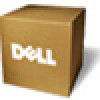Dell PowerVault 57F User's Guide - Page 5
format, autoexec.bat, c:\windows
 |
View all Dell PowerVault 57F manuals
Add to My Manuals
Save this manual to your list of manuals |
Page 5 highlights
The following list defines (where appropriate) and illustrates typographical conventions used as visual cues for specific elements of text throughout this document: Interface components are window titles, button and icon names, menu names and selections, and other options that appear on the monitor screen or display. They are presented in bold. Example: Click OK. Keycaps are labels that appear on the keys on a keyboard. They are enclosed in angle brackets. Example: Key combinations are series of keys to be pressed simultaneously (unless otherwise indicated) to perform a single function. Example: Commands presented in lowercase bold are for reference purposes only and are not intended to be typed when referenced. Example: "Use the format command to . . . ." In contrast, commands presented in the Courier New font are part of an instruction and intended to be typed. Example: "Type format a: to format the diskette in drive A." Filenames and directory names are presented in lowercase bold. Examples: autoexec.bat and c:\windows Syntax lines consist of a command and all its possible parameters. Commands are presented in lowercase bold; variable parameters (those for which you substitute a value) are presented in lowercase italics; constant parameters are presented in lowercase bold. The brackets indicate items that are optional. Example: del [drive:] [path] filename [/p] Command lines consist of a command and may include one or more of the command's possible parameters. Command lines are presented in the Courier New font. Example: del c:\myfile.doc v














